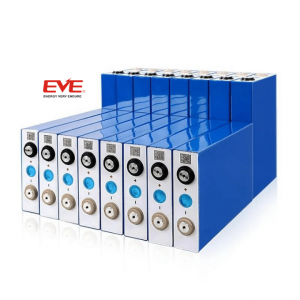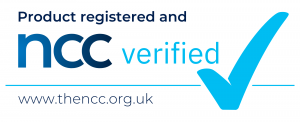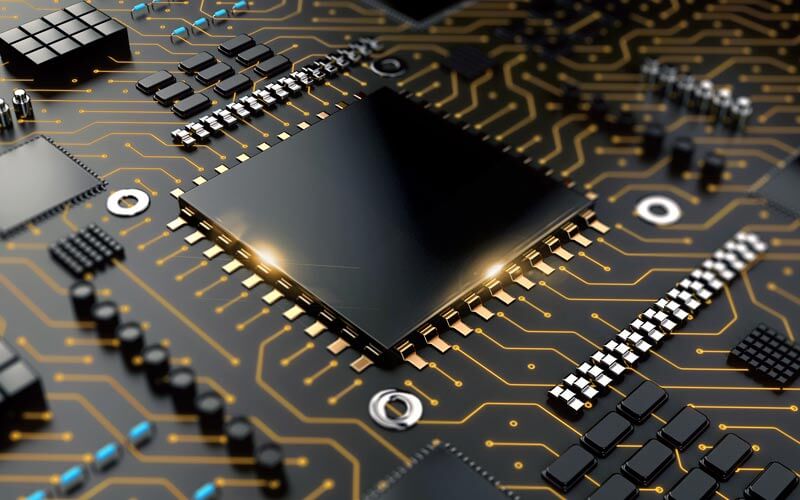Lithium is a chemical element of the periodic table with the symbol Li and atomic number 3. Discovered in 1817, it is the lightest of all alkali metals, dull silvery grey in appearance. It doesn’t occur naturally in nature, it is isolated using electrolysis from a mixture of lithium chloride and potassium chloride.
In the early 1990s, the first commercial rechargeable lithium-ion battery emerged. Today, these batteries have become essential lightweight, rechargeable power sources for various portable electronic devices like mobile phones, laptops, and now electric vehicles (EVs). The technology’s popularity is also surging in aerospace and military applications. A modified version of lithium-ion chemistry, known as Lithium-Iron-Phosphate (LiFePO4), offers even more benefits. It can withstand numerous charge/discharge cycles while experiencing only a minimal reduction in energy density. LiFePO4 batteries operate within a range of 3.0V-3.65V, differing from the standard lithium-ion chemistry’s 3.0-4.2V range. This, coupled with a consistently flat discharge voltage curve, positions the 12v Lithium battery as an excellent substitute for 12V lead-acid batteries across nearly all applications.
Within the lithium battery case, multiple packs of lithium cells are housed, in various shapes and sizes. Prismatic cells, characterized by a flat rectangular format, or Cylindrical Cells, adopting a ‘swiss-roll’ configuration, make up the cell types. These cells consist of anode and cathode strips intertwined with a separator, coated in an electrolyte, each offering distinct advantages. The ‘Anode’ designates the negative electrode, while the ‘Cathode’ denotes the positive side. Charging prompts ions to migrate from cathode to anode through the separator, whereas discharging reverses this flow. Serving as a non-conductive barrier between the Anode and Cathode, the Separator prevents electron short-circuiting, allowing electrons to flow smoothly to the device.
Additionally, the battery houses a Battery Management System (BMS) which constantly monitors individual cell parameters, making adjustments to optimize performance and reliability.
Cylindrical cells found in 12v Lithium Batteries feature electrodes that are wound tightly like a ‘swiss roll’ within a specially designed metal casing. They come in various shapes, sizes and capacities. The cells have a nominal voltage of 3.2V. They can be assembled in series and parallel to increase the voltage & capacity.
However, cylindrical cell use in battery packs is becoming redundant due to a number of drawbacks coupled with the advance in Prismatic cell technology. Unlike prismatic cells cylindrical are not very space efficient thus reduces the amount of energy you can pack into a small battery case. Consistent and accurate Cell Balancing of 80 cells is far greater to achieve than with just few Prismatic cells. Now with the advent of bluetooth monitoring you can now follow the state of balance of your cells. Which shines the light on the use of cylindrical cells & their inefficiencies compared with prismatic cells. Thermal management is also a concern as cells heat up during cycling and heat dissipation is more challenging compared with Prismatic cells. BEWARE: Many companies are still selling this type of technology. Always ask what type of cell and what level of certification they have.


Prismatic Cells are the latest 12v Lithium Battery LiFePO4 technology.
All Lithium Pro Batteries use Traceable Grade A Prismatic cell technology. All cells used in our batteries are UL LISTED UL1973, UL1642 and UL2580. The cells are encased in either aluminium or steel, mainly for the purposes of increased stability. Due to their unique construction prismatic LiFePO4 batteries tend to be very thin, very light and offer an effective use of space. Unlike their cylindrical cousins they come in various shapes, sizes and capacities. Making them more versatile and easy to package. They also have a nominal voltage of 3.2V. With such significant advantages in energy density, weight, power, safety, thermal efficiency and long term durability they provide a benefit over cylindrical cells.
Experience excellence with our Premium SMARTIQ SERIES range. It sets the standard for Innovation, Endurance, Quality, Intelligence, Refinement and Serviceability.
Whats inside the black box?
The outer black boxes may be similar but thats where the similarities end. Not all Lithium batteries are made the same. There are various components that make up lithium battery pack explained above. Just because manufacturers use off-the-shelf battery boxes this doesnt mean they are made in the same factory or using the same components. Manufacturers use different cells and different quality components to make up their battery. Take a look inside, we’ve nothing to hide…. We’ve even prepared a video to show you how we make our batteries.
In our latest development, we have introduced a brand new battery case for our entire range of Intelligent SMARTIQ SERIES batteries, making them fully serviceable and upgradeable. No longer do you need to break open hermetically sealed cases to repair or service them. We have designed them to be easily accessible, ensuring they can be serviced and upgraded with advancing BMS technology. Rest assured, as technology advances, you won’t be left behind. We are future-proofing our batteries along with your investment.
At Lithium Pro Energy, we prioritise safety and quality of our batteries. That’s why all our Lithium Pro batteries are UL listed and have undergone rigorous testing and certification including UKCA, CE, ROHS, RED, and UN38.3. These stringent safety tests ensure that our batteries meet the highest industry standards. The SMARTIQ range are now verified by the NCC (National Caravan Council) with the highest possible rating for a battery in Class A
Furthermore, as part of our quality control process, each battery undergoes a complete charge and discharge cycle before leaving our factory. This meticulous procedure ensures that every battery delivered to you is in optimal condition and ready to perform at its best.






A Battery Management System (BMS) is an essential component of a lithium battery pack. Its core function is to monitor and control the individual cells within the battery to ensure safe and efficient operation during all circumstances.
The BMS’s capability to balance the voltage of individual cells is a significant factor contributing to the extended lifespan of a lithium battery. This ensures that the battery can consistently deliver 100% capacity in each cycle.
Not all BMS are equal. They vary dramatically in quality and sophistication, with some being more advanced than others. A high quality BMS uses superior components, enabling larger continuous current flows during both charging and discharging. The increased continuous current flow translates to the ability to operate a larger inverter.
High Quality BMS’s also have an array of additional features to protect the battery from short circuiting, charging and discharging protections. Along with a critical cold temperature protection safeguard preventing lithium being charged below 0ºC.
Due to advances in Bluetooth technology we are now able to offer remote monitoring of the battery parameters through the BMS.

By integrating cutting-edge Bluetooth 5.0 technology into our SMARTIQ SERIES batteries, users can effortlessly connect their battery to a smartphone or tablet. Once connected, real-time data monitoring of various parameters becomes possible. Gain valuable insights into your battery performance. Creating the ability to optimise your usage and its long-term health.
Download the free SmartIQ App, available for both IOS and Android platforms. Unlock a world of live data monitoring. Keep track of vital information such as voltage, wattage, temperature, amps, State of Charge (SOC), estimated time till empty, estimated time till full, and an array of other features.
Our advanced Bluetooth technology establishes seamless communication with the Battery Management System (BMS) on board the battery. In case of exceeding usage parameters, the BMS acts as a safeguard, issuing warnings and sending notifications to your smart device. When necessary, the BMS automatically shuts down the battery to protect itself.
< SCROLL THROUGH THE APP SCREENS >
No special charger is required. Any normal lead-acid battery charger designed to output a Constant Voltage Constant Current (CCCV) charge profile, which 95% of chargers do, then this is fine and safe for LithiumPro batteries. Many battery chargers will have pre-programmed settings for different battery chemistries. For Lithium batteries, select the ‘LiFePO4’ profile or the closest charge profile between 14.2-14.6v.
Of course, should you wish to upgrade to a lithium based charger, we would recommend this, as it will charge faster and more efficiently, whilst offering more enhanced protection features during charging, thus preserving the life of you battery.
You can charge your Lithium battery using any or all of the three simple ways listed below:-
1. Harness your alternator’s surplus power to deliver a steady 14.4v charge voltage. Click here for DC-DC Chargers
2. Using a MPPT Solar Charge Controller, you can charge your leisure batteries at a regulated voltage using your solar panels ability to harness the suns energy. Click here for Solar Charge Controllers
3 Using a Mains hook-up charger, you can use a domestic 240v electricity supply to charge you leisure batteries via hook-up or shore power. Click here for Mains Chargers
IMPORTANT: When you first receive your battery, fully charge it until you get a ‘Cell Over Voltage’ (COV) notification. This indicates the battery is fully charged. Then, complete a full discharge until you get a ‘Cell Under Voltage’ (CUV) notification, showing the battery is fully discharged.This process allows your Battery Management System (BMS) to calibrate the State of Charge (SOC) in your app. The BMS will then learn to provide more accurate data, understanding both the 0% and 100% charge parameters.
It is recommended to charge your battery at ≤0.5C (0.5 times the battery’s rated capacity). For instance, if the battery has a capacity of 100Ah, the recommended charging current would be ≤50 amps. Please observe the maximum charging capacity listed on your battery.
Your Lithium Battery with a Constant Current Constant Voltage charger CCCV with a LiFePO4 charging profile.
Absorption should be set to 14.2-14.6v
Float should be set to 13.5-13.9v
De-sulfation/Equalisation should be switched off
Most Victron chargers already have a Lithium charging profile. However, should you wish to personalise your settings, please use the following;
Absorption voltage: 14.4V
Absorption time: Recommended setting is half an hour per 100ah of LiFePO4 battery (for example if you have 2x 150ah batteries select 90mins).
Float Voltage: 13.5V
Equalisation voltage: This must be disabled on all Lithium batteries as this can damage the battery with pulses of high voltages. This is designed for lead acid batteries to add with desulfation.
Temperature compensation: This should also be disabled on Lithium batteries.
Charged Voltage: This is where your battery is considered fully charged – Lithium batteries should be set to 14.4V for Victron equipment.
Low Temperature cut-off: The Drift batteries have low temperature charging protection built into the battery. You can leave this off.
Discharge Floor: 0%
Tail Current: This is the minimum current at which the Smart Shunt considers charging or discharging finished. We recommend 4%.
Peukert Exponent: Not required – this is for Lead Acid batteries.
Yes our SMARTIQ Series batteries are all ‘Drop-In’ Lead-Acid replacements. They are exactly the same size and shape as your old Lead-Acid batteries with the exact same terminal posts, so there is not need to change your electrical connections. They even have the base rail at the base to safely secure your battery in place. No need to look for inventive ways to strap a chinese replacement battery down. Click here for ‘Drop-In’ replacement batteries.
Yes, all LithiumPro Energy batteries can be connected in Series or Parallel up to a maximum of 4 units. Our SMARTIQ BMS APP with also be able to display your battery system as a whole in both Series or Parallel configurations.
WARNING: Never connect Lithium batteries of different brands, capacities, or ages together. All brands have unique Battery Management Systems (BMS), and mixing can cause imbalances in charging or discharging, potentially leading to overheating and premature failure. NOTE: Always fully charge each battery separately before connecting them in series or parallel. LithiumPro batteries can be configured as follows:
For series configuration, ensure each battery is charged to within 0.05V of each other to prevent imbalances.
For parallel configurations, use cables that are as short and identical in length as possible; batteries naturally equalise in voltage when connected this way.
Lithium batteries are extremely reliable technology. If cared for and looked after according to the manufacturers guidelines you should still be using your battery in 10+ years time. LithiumPro Energy only use traceable Grade-A Prismatic cell technology in all of their batteries which are capable of over 4000-8000 cycles at 80% depth of discharge. Meaning if used every day it will last between 11 -21 years, and still retain 80% of their rated capacity. We are so confident of all our batteries they are covered by our comprehensive 5 year manufacturers warranty.
Yes, you can safely discharge your Lithium Battery down to temperatures as low as -20ºc However, Lithium batteries cannot be charged in temperatures below zero unless they have heaters embedded within the battery. All LithiumPro Batteries have a safety feature built into the battery to prevent it charging below 0ºc. If you are using one of our SMARTCOMM SERIES batteries they are come with heaters on-board as standard Click here to see our ARCTICXTREME V2 Battery designed for charging in colder climates.
Yes, our SMARTCOMM range have been exclusively designed to fit under the front seat of your motorhome or campervan. You can chose from the UK’s most powerful 175AH DIN H8 ArcticXtreme V2 battery, or the UK’s safest and most powerful seat base battery ever the advanced 280ah SEATBASE. You can even fit 2 in parallel for 300AH under the seat of Fiat Ducatos, Peugeot Boxers, Citroen Relays, Merc Sprinter, VW T6, VW Crafter, Transit Custom. Click here to see installation guide.
When connecting batteries together for communication via CANbus ports, use standard RJ45 cable to link them and terminate last battery with the RJ45 termination plug provided. See diagram here.
or more advanced lithium batteries
See our SMARTCOMM SERIES that come with a range of advanced features and safety protections
UK’S MOST POWERFUL LITHIUM BATTERY IN A H8 DIN SIZE BATTERY CASE
200A CONTINUOUS DISCHARGE CAPABILITY
RUN A 2500W CONTINUOUSLY
SMARTCOMM SERIES WITH CANBUS RS485 CONNECTIVITY COMMUNICATE DIRECTLY WITH VICTRON GX OR NMEA 2K DEVICES
UK’S MOST POWERFUL SEATBASE LITHIUM BATTERY
250A CONTINUOUS DISCHARGE CAPABILITY
RUN A 3200W CONTINUOUSLY
SMARTCOMM SERIES WITH CANBUS RS485 CONNECTIVITY COMMUNICATE DIRECTLY WITH VICTRON GX OR NMEA 2K DEVICES
UK’S MOST ADVANCED LITHIUM BATTERY
250A CONTINUOUS DISCHARGE CAPABILITY
RUN A 3200W CONTINUOUSLY
SMARTCOMM SERIES WITH CANBUS RS485 CONNECTIVITY COMMUNICATE DIRECTLY WITH VICTRON GX OR NMEA 2K DEVICES

Delivery is free to all mainland UK, with the exception of NI, Scotland and the isles. Our couriers charge a small premium to delivery to these locations. This will be calculated at checkout based on your postcode.
Chat